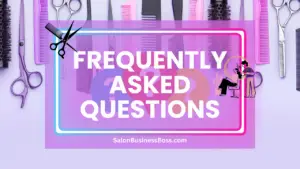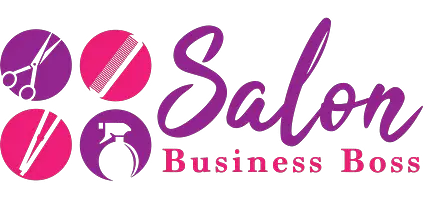Running a successful hair salon business requires a keen understanding of various financial metrics, and one of the most critical indicators of a salon’s profitability is the profit margin. The profit margin is the percentage of revenue that remains as profit after deducting all expenses.
Profit margin on hair salons can reach an impressive 17% through effective cost management, upselling, loyalty programs, and strategic pricing. Skilled staff, digital marketing, and exclusive packages further boost profitability. Continuous education and alliances with product brands maintain a competitive edge. Success lies in maximizing revenue while delivering exceptional services.
1. Cost Management and Efficiency

Effective cost management and operational efficiency are key factors contributing to the impressive profit margins observed in hair salons. Savvy salon owners understand the importance of scrutinizing expenses and constantly seeking ways to enhance financial performance. They adopt a proactive approach to cost control, meticulously evaluating each aspect of their operations.
Negotiating with suppliers allows salon owners to secure favorable deals on products, tools, and equipment. Bulk purchases and long-term contracts can lead to substantial cost savings, which directly impact the bottom line. Additionally, seeking out alternative suppliers or sourcing locally can further reduce expenses without compromising the quality of products and services.
Optimizing staff scheduling is another critical aspect of cost management. Ensuring that the salon operates at its maximum capacity during peak hours while adjusting staff levels during slower periods can minimize labor costs while maintaining service efficiency. Moreover, investing in employee training and cross-training allows for a more versatile workforce, ensuring that stylists can handle various services, thus maximizing productivity.
Reducing energy consumption is both environmentally responsible and financially advantageous. Implementing energy-efficient lighting, heating, and cooling systems can lead to significant cost savings over time. Similarly, adopting eco-friendly practices, such as water-conserving technologies, reduces utility bills and demonstrates the salon’s commitment to sustainability, which can be appealing to eco-conscious clients.
Efficient inventory management is crucial for eliminating waste and avoiding unnecessary expenses. Keeping track of product usage and demand patterns allows salon owners to stock the right quantities of products without overstocking. This not only reduces carrying costs but also minimizes the risk of products expiring or becoming obsolete.
Read more about: Running a Salon Business: A Guide and Key Strategies
2. Upselling and Cross-Selling Techniques
Upselling and cross-selling techniques are powerful tools that can significantly impact a salon’s revenue and profit margin. Well-trained stylists and staff possess a unique opportunity to engage clients and suggest additional services that complement their original request. For example, when a client comes in for a haircut, the stylist can tactfully recommend a hair treatment or deep conditioning to improve the overall health and appearance of their hair. Similarly, suggesting a relaxing hair spa session can entice clients to indulge in a pampering experience.
Retail products also present a lucrative avenue for upselling and cross-selling. Stylists can showcase and explain the benefits of various hair care serums, shampoos, and conditioners that cater to specific hair types or concerns. By effectively promoting these products, salon owners can increase their average ticket size as clients add them to their purchase.
Beyond the immediate financial gains, upselling and cross-selling initiatives can foster a stronger relationship between the salon and its clientele. When clients perceive that the salon staff genuinely cares about their hair care needs and offers personalized recommendations, they are more likely to trust and return to the salon regularly.
Implementing effective upselling and cross-selling techniques aligns with the principle of enhancing customer satisfaction. By offering additional services and products that cater to clients’ individual requirements, the salon enhances the overall customer experience and elevates its reputation in the market.
3. Membership and Loyalty Programs
Implementing membership and loyalty programs can significantly impact the success of a hair salon. By offering exclusive benefits and discounts to repeat customers, these programs incentivize client loyalty, fostering a sense of appreciation and connection. Clients who feel valued and rewarded are more likely to choose the salon for their hair care needs consistently.
Membership programs often include perks such as priority booking, access to exclusive events, or special treatment packages at discounted rates. On the other hand, loyalty programs may offer points for every visit or purchase, which clients can redeem for free services or retail products. These benefits not only entice customers to return but also create a sense of exclusivity, making clients feel like part of a select group.
One of the key advantages of membership and loyalty programs is their ability to generate a steady stream of revenue. Regular clients who participate in these programs contribute to predictable cash flow, reducing the salon’s reliance on sporadic walk-in clients. As a result, the salon can better plan and allocate resources, ensuring a stable and sustainable business operation.
Customer retention is a crucial factor for a salon’s long-term success. Loyalty programs help in retaining existing clients, reducing customer churn, and ultimately increasing the salon’s profitability. Additionally, loyal customers tend to refer their friends and family to the salon, expanding its customer base through positive word-of-mouth.
4. Strategic Pricing Strategies
Setting the right prices for services is a delicate balance that can significantly impact a hair salon’s profit margins. Conducting thorough market research to understand pricing trends in the local area is essential. This research should consider factors such as the target audience, competitors’ pricing, and the salon’s unique selling proposition.
Competitive pricing is crucial to attract clients, especially in a saturated market. Offering rates that are in line with or slightly below competitors’ prices can entice potential clients to give the salon a try. However, it is equally important not to undervalue services, as this may raise doubts about the quality of the offerings.
Perceived value plays a vital role in customers’ decision-making. Salon owners must emphasize the unique benefits and exceptional experience they provide to justify premium pricing. Creating a sense of luxury and professionalism can lead clients to perceive the salon’s services as worth the investment, enabling higher profit margins.
Strategic pricing also involves differentiating services based on their complexity and resources required. Offering tiered pricing based on the stylist’s experience or the level of service can cater to a broader clientele while maximizing revenue from premium services.
Regularly reviewing and adjusting pricing strategies is essential to keep up with changing market dynamics. For instance, periodic adjustments to accommodate inflation or changes in demand can help maintain profitability over time.
5. Effective Staff Management

The success of a hair salon heavily relies on the expertise and performance of its staff. Hiring skilled and passionate professionals who excel in providing exceptional services is crucial for attracting and retaining a loyal clientele. When clients receive top-notch treatments and experience personalized care, they are more likely to become repeat customers and recommend the salon to others.
Having a team of highly competent stylists also justifies premium pricing for services. Clients are willing to pay more when they trust the expertise of the salon’s staff and believe they will receive top-quality results. As a result, the salon can position itself as a premium service provider, commanding higher prices and contributing to a healthier profit margin.
Efficient staff management goes beyond hiring the right talent. Optimizing staff schedules and productivity levels is essential for maximizing the salon’s revenue potential. Ensuring that the salon operates at its peak capacity during busy hours and minimizing idle time during slower periods helps to maximize the use of resources and minimize labor costs.
Employee training and skill development are equally critical components of staff management. Regular training sessions keep stylists updated with the latest trends and techniques, allowing the salon to offer cutting-edge services that attract clients seeking modern and innovative hair solutions. Skilled staff can also handle a wider range of services, providing clients with more options to choose from and generating additional revenue streams.
Read more about: How to Run a Successful Hair Salon: Salon Management and Efficiency
6. Digital Marketing and Online Presence
In the digital age, having a strong online presence is crucial for the growth and success of a hair salon. An attractive and user-friendly website serves as the salon’s virtual storefront, providing essential information about services, pricing, and contact details. Potential clients often research salons online before making a decision, and a professional website can create a positive first impression, leading to increased footfall.
Active engagement on social media platforms is equally vital for a salon’s online presence. Social media allows the salon to showcase its work, interact with clients, and share valuable content related to hair care tips and trends. Regular updates and engaging posts create a sense of community and help build a loyal online following, which can translate into more clients and higher revenue.
Positive online reviews and testimonials play a significant role in attracting new clients. Potential customers often rely on reviews from others to assess the salon’s reputation and service quality. Encouraging satisfied clients to leave reviews and responding to feedback demonstrates the salon’s commitment to customer satisfaction, enhancing its credibility and online reputation.
Engaging in targeted digital marketing campaigns is a powerful strategy to attract new clients and retain existing ones. Online advertising, email marketing, and promotions through social media can effectively reach the target audience and increase footfall to the salon. Furthermore, digital marketing campaigns can be tailored to specific client segments, ensuring a higher return on investment and increased profitability.
7. Cost-effective Marketing Strategies
While digital marketing has become an indispensable tool for reaching a broader audience, cost-effective traditional marketing strategies should not be underestimated in the hair salon industry. Collaborating with local businesses for cross-promotions is an excellent way to leverage each other’s customer base and increase brand visibility. For instance, partnering with a nearby spa or clothing boutique to offer joint promotions can attract new clients who might not have discovered the salon otherwise.
Distributing flyers in the neighborhood is a time-tested and budget-friendly marketing tactic. Well-designed flyers showcasing the salon’s services and special offers can pique the interest of passersby and potentially convert them into customers. Targeting specific areas with a higher concentration of the salon’s target audience can yield better results.
Participating in community events is another cost-effective marketing approach. Sponsoring or participating in local fairs, charity events, or fundraisers allows the salon to interact with the community directly. Such involvement not only raises brand awareness but also fosters a positive perception of the salon as a socially responsible and community-oriented business.
Building a strong referral program is yet another effective cost-effective marketing strategy. Encouraging satisfied clients to refer friends and family in exchange for discounts or incentives can create a steady stream of new customers without significant advertising expenses.
8. Strategic Alliances with Product Manufacturers
Forming strategic alliances with reputable hair care product manufacturers can be a win-win situation for both the salon and the brand. By exclusively using and promoting specific brands, salons can strengthen their credibility and elevate their image as professionals committed to providing top-quality services.
One of the significant advantages of such alliances is access to discounted rates on products. Manufacturers often offer preferential pricing to salons that exclusively use their products. These discounts, in turn, can lead to significant cost savings for the salon, positively impacting profit margins.
Strategic alliances may come with additional perks, such as training support. Manufacturers often provide educational workshops and resources to salon staff, ensuring that stylists are well-versed in the latest product application techniques and trends. This level of expertise further enhances the salon’s reputation and attracts clients seeking the latest and best hair care solutions.
Promotional materials and marketing support are other valuable benefits that manufacturers may offer as part of the alliance. Co-branded marketing materials, including banners, posters, and product displays, can enhance the salon’s aesthetic appeal and create a cohesive brand experience for clients.
The synergy between the salon and the product brand also extends to the customers. By using and recommending specific products, stylists instill confidence in clients about the effectiveness and reliability of those products. Satisfied clients are more likely to purchase these products for home use, leading to increased sales and higher profit margins.
9. Offering Exclusive Packages and Bundles

Creating exclusive packages and bundles of services is a smart strategy to entice customers and boost the salon’s revenue and profit margin. These packages provide added value and convenience to clients, encouraging them to indulge in multiple services at once.
Bridal packages are a popular option, offering a comprehensive range of services for brides-to-be and their bridal parties. These packages often include hair styling, makeup application, nail services, and other pre-wedding beauty treatments. By bundling these services together, the salon can attract a significant number of clients seeking all-in-one solutions for their special day.
Seasonal promotions are another effective way to leverage exclusive packages. For example, offering summer makeover packages that include hair color, haircut, and hair treatments can attract clients looking to refresh their look for the season. These limited-time offers create a sense of urgency, prompting clients to take advantage of the special deal before it expires.
“Pamper yourself” packages are designed to provide a luxurious and indulgent experience. These bundles may include services like a relaxing hair spa treatment, deep conditioning, scalp massage, and a blowout. By presenting these services as a package, the salon can showcase its expertise in delivering a comprehensive and high-quality pampering session.
Read more about: How to Run a Successful Hair Salon: Salon Management and Efficiency
10. Continuous Education and Skill Development
Investing in the continuous education and skill development of salon staff is a vital component of maintaining a competitive edge in the hair salon industry. The beauty and hair care industry are constantly evolving, with new trends, techniques, and technologies emerging regularly. To stay ahead of the curve, salon staff must stay updated and trained in the latest industry developments.
By offering cutting-edge services, the salon can differentiate itself from competitors and attract clients seeking innovative and trendsetting hair solutions. Clients are often willing to pay a premium for services that incorporate the latest techniques and products. As a result, staying at the forefront of industry trends can lead to higher service prices and increased profitability.
Continuous education also enhances the expertise and confidence of salon staff. Knowledgeable and skilled stylists provide clients with superior services and personalized recommendations, leading to improved client satisfaction and loyalty. Satisfied clients are more likely to become repeat customers and advocate for the salon, generating positive word-of-mouth referrals.
Investing in staff development fosters a positive work culture and demonstrates the salon’s commitment to its employees’ professional growth. This, in turn, can lead to higher staff retention rates, reducing recruitment and training costs.
Conclusion
Hair salons have the potential to achieve impressive profit margins, reaching as high as 17% and beyond. By focusing on cost management, operational efficiency, upselling and cross-selling, loyalty programs, strategic pricing, and effective marketing, salon owners can unlock the full potential of their businesses. Emphasizing customer satisfaction, staff training, and aligning with reputable product manufacturers will help maintain a loyal clientele and attract new customers. With the right strategies and a commitment to excellence, hair salon owners can build thriving and financially rewarding businesses with enviable profit margins.
Frequently Asked Questions

1. What advantages do exclusive packages offer in boosting profit margins?
Exclusive packages entice customers with added value, encouraging them to experience more services, resulting in increased revenue and profit margins.
2. Can community involvement impact a salon’s profit margin?
Yes, participating in community events and forming alliances with local businesses can enhance brand visibility and attract more customers, positively affecting profit margins.
3. How can salons handle seasonal fluctuations to maintain profit margins?
During slow seasons, salons can focus on targeted promotions, special offers, and diversifying service offerings to generate revenue and sustain profit margins.
To learn more on how to start you own salon checkout my startup documents here.
Please note that the contents of this blog are for informational and entertainment purposes only and should not be construed as legal advice. Any action taken based on the information provided in this blog is solely at your own risk. Additionally, all images used in this blog are generated under the CC0 license of Creative Commons, which means they are free to use for any purpose without attribution.

About the author. Entrepreneur and Salon Business Fan.
Hi! I am Shawn and I am a happy individual who happens to be an entrepreneur. I have owned several types of businesses in my life from a coffee shop to an import and export business to an online review business plus a few more and now I create online salon business resources for those interested in starting new ventures. It’s demanding work but I love it. I do it for those passionate about their business and their goals. That’s why when I meet a salon business owner, I see myself. I know how hard the struggle is to retain clients, find good employees and keep the business growing all while trying to stay competitive.
That’s why I created Salon Business Boss: I want to help salon business owners like you build a thriving business that brings you endless joy and supports your ideal lifestyle.

